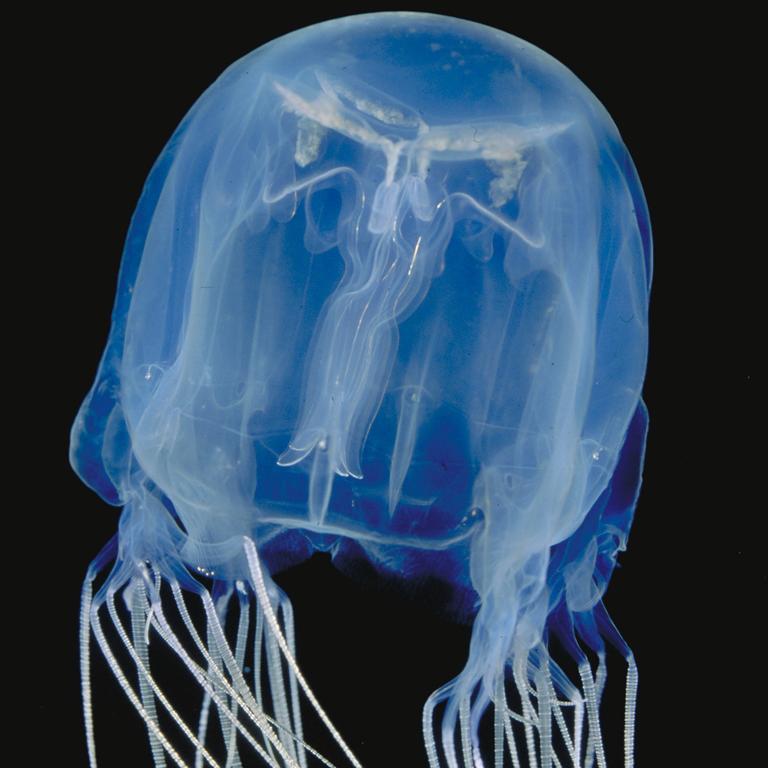James Cook University use DJI drone to detect deadly box jellyfish
It’s one of Australia’s most deadly creatures, but until now it’s been a dangerous challenge to study. Scientists think they have an answer.
Scientists believe drones could be the future of monitoring marine life and have already used the technology to track one of Australia’s most dangerous animals.
The brainless, highly venomous box jelly fish Chironex fleckeri lives in the waters of northern Australia and south east Asia.
Their sting is so powerful it can cause people to die before they can even get out of the water.
This makes monitoring the population dangerous while their habitat in the open ocean makes it logistically difficult.
RELATED: Boy attacked by shark ‘in good spirits’
RELATED: Monster snake found hiding under bonnet

RELATED: Man mauled by leopard in backyard
RELATED: Bull on the loose in Sydney
In an effort to overcome these barriers scientists have used regular old consumer drones you might buy at your local electronics shop to monitor the area where the jellyfish live.
Scientists from James Cook University’s (JCU) Australian Institute for Tropical Health and Medicine recently completed a study in the waterways around Weipa in north Queensland, seeking to address the “very limited” amount of knowledge of the box jellyfish and other challenging marine species’ by using modern technology to track where they live and how many there are.
RELATED: Bald eagle takes down US government drone

Using drones is not perfect, but the initial study suggests the unmanned aerial vehicles don’t face all the same challenges other methods do, and managed to detect more jellyfish than the traditional methods.
The scientists found the drones made it faster and cheaper than trying to conduct the same surveys from a boat, with the only real challenges relating to the weather on the day and the size of the target species.
More cloud cover led to better detections thanks to less glare coming off the sea.
Larger jellyfish were easier to spot but not just due to their size: They also had “markedly more opaque gonadal tissue” in the bell, which improved the contrast between the jellyfish and the sea floor, making them easier to spot.
Previous studies using drones to monitor marine life have focused on “iconic megafauna” like whales and dolphins according to the JCU scientists.

Their study looking for box jellyfish used a $1799 DJI Mavic 2 drone with a 12 megapixel camera to cover a total area estimated at up to 2450 square metres over a period of eight days.
While the drone flew over the water three times at a height of six metres and again at 10 metres, scientists also placed nets in the area as they usually would, catching jelly fish and hauling them to the shore.
Using the nets they found 103 box jellyfish, while the drone identified 107.
Additionally, having the footage available for review after the fact also led to more animals being detected, with a 250 per cent difference in the number of jellyfish detected by observers in the lab than the drone pilot on the day.
The JCU team said the drones opened “a gateway for ecological understanding” and hoped the methods could be applied on a wider scale to improve knowledge of “logistically difficult” species like the box jellyfish.
The study has been published on PLOS ONE.



